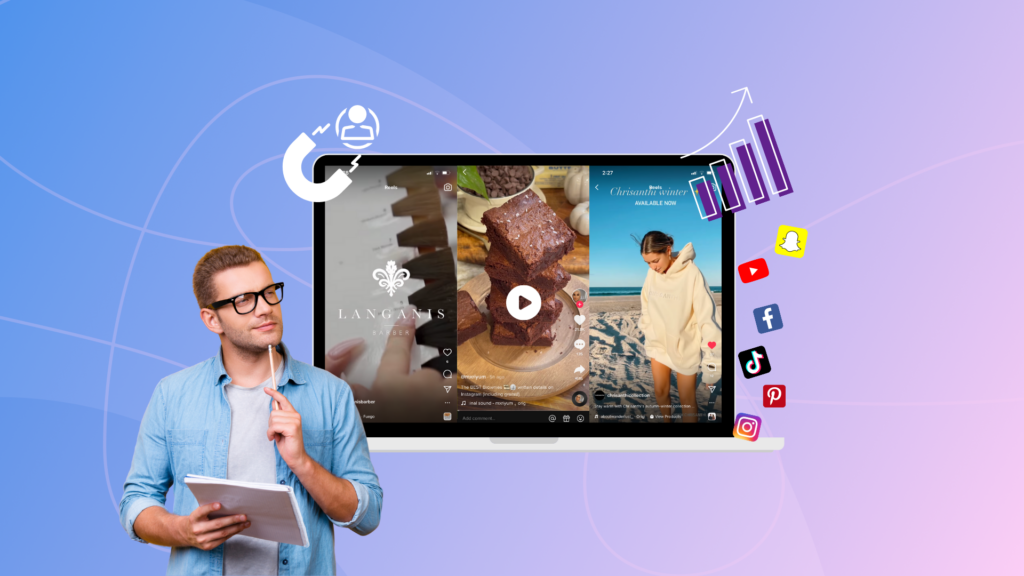Do you realize that over 82% of today’s internet traffic comprises videos? Everyone enjoys watching videos, which is a common kind of content marketing. The vast number of videos posted on social media platforms is evidence of this fascination with video content. 500 hours of footage are being uploaded to YouTube every minute.
A video marketing campaign is an excellent technique to promote a business and draw customers. Creating insightful videos is more crucial than ever for a video production company and other similar businesses. Video consumption among users has increased due to the pandemic’s effects and people’s increasing tendency to not go out.
Multiple pieces of research indicate that over 90% of viewers want to consume videos from brands and businesses, so this trend isn’t slowing down rather it would escalate in the coming time.
Top Metrics to Track For A Video Campaign

Source: clipchamp.com
The initial step one should follow to get a good ROI (Return-on-Investment) is understanding the different metrics irrespective of any platform or video genre, that can contribute to a video’s performance. So, check out these techniques for tracking the campaign.
1. Video Content Impressions
An impression is the occurrence of a video on the user’s screen. Impressions frequently take the form of ads, but can also happen when the user searches for content and the video’s thumbnail appears in the search engine results page. It can be a useful metric because they help in revealing the content’s audience reach that can be used to estimate the potential base.
2. Number Of Views
It indicates how many users have watched a video. The term “view” can have multiple meanings depending on the video content platform and type. A user watches a video for at least three seconds, certain platforms count that as one view. There are platforms that have stricter requirements, like 30 seconds. This indicator aims to show whether there are convincing reasons for viewers to click on the content. A video’s reach includes the types of viewers it can able to attract can be described by its view count.
3. Playing Speed of The Video
The total number of users actively watching the video can determine the play rate of the video. The play rate can be calculated by dividing the number of people that hit play by the total number of visitors to the website where the content is located, but frequently a platform will do the work.
This statistic helps assess the material’s appeal, including the video’s thumbnail, its placement on the website, size, title, and the accompanying text. Strong play rates indicate effective visual utilization and strong topical relevance for the page.
4. Watching Time Duration
The duration of time spent watching a video is known as the watching time. One can learn how intriguing the content is to users by tracking viewer engagement. A higher watch time may cause a video to rank above rival search results on some platforms that base video ranking on the watch time measure. Videos that swiftly introduce the subject and respond to a crucial query enhance viewership because people can immediately obtain the necessary information.
5. Watching The Video Multiple Times
Rewatches are the number of times a viewer returns to a piece of video content, either to rewatch specific sections or the entire thing. A high percentage of rewatches indicates that people find the content interesting and relevant. Analyze the content getting the most rewatches to increase the rewatch rate, and strive to provide content on related subjects in the future.
6. Engaging With The Users

Source: searchenginejournal.com
Engagement gauges how viewers react to a video. There are various ways for viewers to express their opinions on the material on video platforms, including like and dislike buttons, share options and comment sections. Metrics for engagement can reveal whether and how the content has emotionally impacted viewers. They respond to inquiries concerning audience approval, attitudes toward the material, and brand affinity.
7. Online Interaction
Social media sharing counts the individuals who share video material. This statistic is useful since it increases engagement and demonstrates that viewers find the information interesting. Knowing this, evaluate the video’s qualities and incorporate them into future content. In addition, social sharing rates can impact measures like view count and click-through rate, which can enhance the advantages of each.
8. New Users
It indicates the number of new users who have viewed the content. Content creators running a channel on a video platform, and which other organizations do, look for distinct viewing metrics. These data can help to understand whether the brand is going at the right direction or not. The number of viewers or new users can definitely increase because of the sharing rate and impression counts..
9. User Testimonials
The testimonials reveal the viewer’s impression of the content and are provided in the reactions and comments section. The comments are highly effective on the brand’s image and whether the campaign is able to create interest among the target audience.
10. User Conversion Rate
The total amount of users getting converted into customers is measured by the conversion rate. A viewer subscribing to a company’s email or purchasing the product or services when a video featuring a new product can be termed as a conversion.
The utility of the campaign can be determined by checking the user conversion rate. The team can enhance conversion rates by supplying users with the necessary data to perform desired activities. These activities, aligned with organizational objectives, can range from email sign-ups to purchasing services or products.
11. A Website’s Bouncing Rate

Source: codedesign.org
The number of visitors to a website that leaves without visiting any additional pages is called the “bounce rate.” This metric can be helpful when posting a video on the landing page—a website made especially for a marketing campaign. The goal is to reduce the bounce rate because a greater rate indicates that fewer users are exploring the parts of the website one might want them to.
Conclusion
The business target and objectives will determine which metrics one should concentrate on. One can take data-driven decisions to improve video marketing campaigns and help in achieving business objectives by monitoring and examining these amazing metrics.



